Expanding foam is an excellent material to seal up cracks and small openings around the house. But did you know that expanding foam can also be used for other purposes? Now, you're wondering what growing foam sticks to. Luckily, we compiled our research to help you learn how to use it properly.
While most adhesives will only stick to certain surfaces, expanding foam can bond with many materials. This makes it ideal for various applications, from crafts to construction. Expanding foam will adhere best to metal, plastic, and PVC. It attaches to wood and glass, although sometimes, these surfaces are less receptive.
In this blog post, we will explore some of the ways that expanding foam can be used. We will also look at the different types of expanding foam available on the market and discuss which type is best suited for each application. So, if you want to learn more about expanding foam, keep reading!
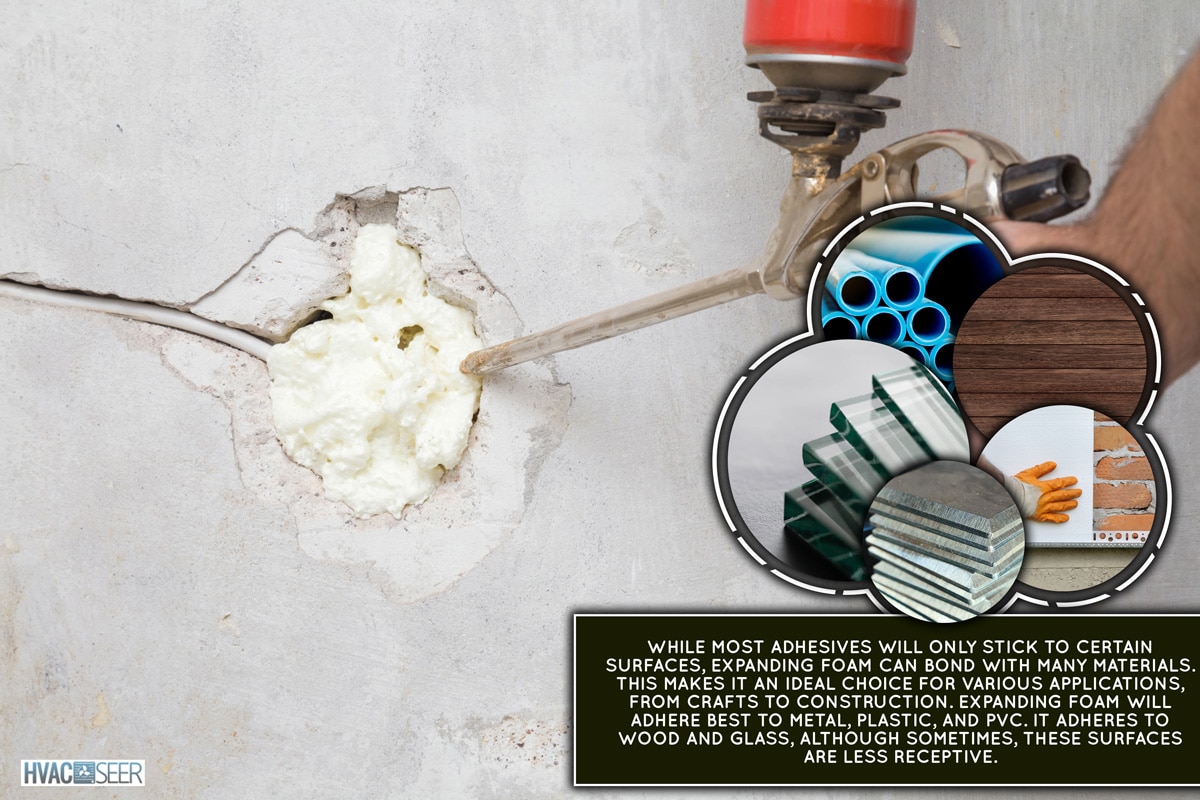
What Is Expanding Foam and What Are Its Main Uses?
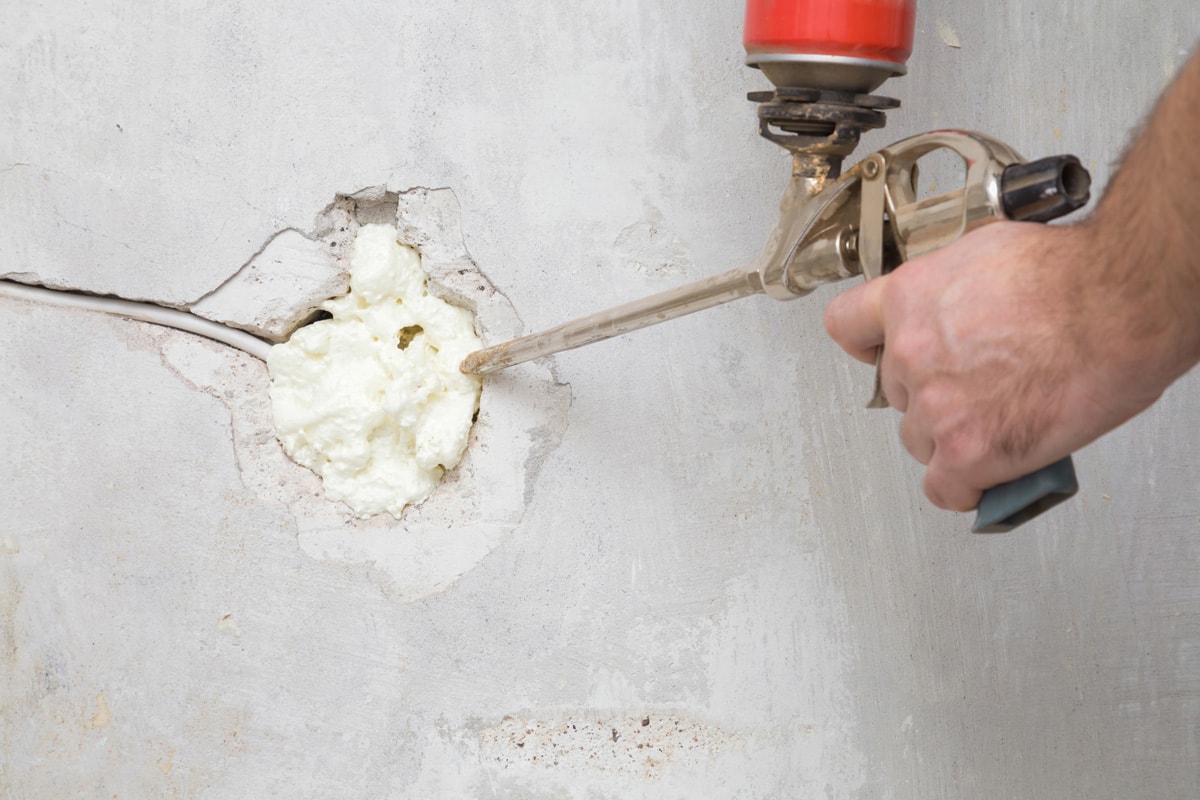
Expanding foam is a spray foam used for insulation, filling gaps and cracks, and weatherproofing. The foam is applied as a liquid and then expands to fill the desired space.
It can be used on interior and exterior surfaces and is available in different types, depending on the project. For example, closed-cell foam is typically used for insulation, while open-cell foam is often used for soundproofing.
Expanding foam can improve your home's energy efficiency and prevent drafts, leaks, and pests. You can also use it to fill in gaps around doors and windows, preventing heat loss in the winter and entrapping cooled air in the summer.
In addition, expanding foam can fill holes in walls or seal cracks in foundations. When applied correctly, expanding foam can effectively improve your home’s energy efficiency and reduce your heating and cooling costs.
How Does Expanding Foam Work?
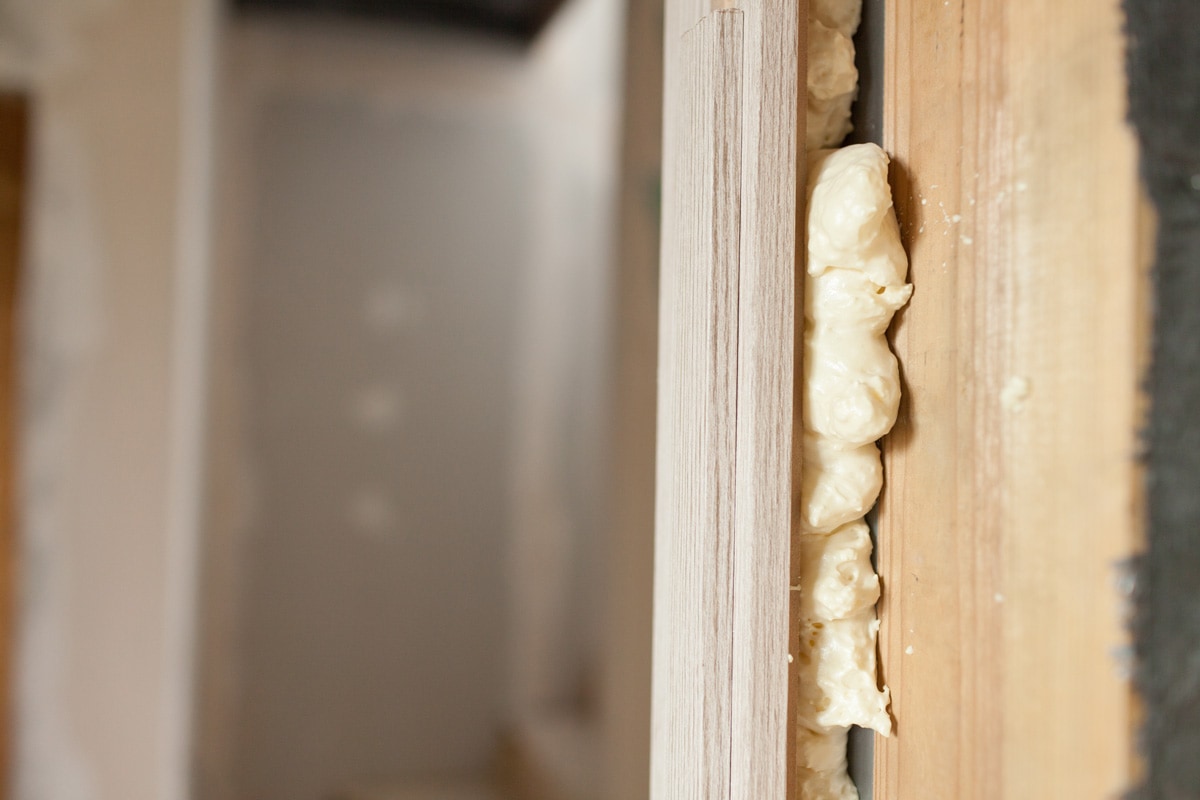
Expanding foam is made from various materials, but the most common type is polyurethane. This material is mixed with a blowing agent that causes it to grow when it comes into contact with air.
Expanding foam is a type of plastic that starts as a liquid and hardens into a solid when exposed to air. It comprises two main ingredients: a resin and a blowing agent.
The resin is a liquid containing active ingredients that expand the foam. The blowing agent is a gas trapped in the resin when the foam hardens. This gas makes the foam expand to many times its original size, giving it its characteristic spongy texture.
When expanding foam comes into contact with any materials, it provides a surface for the gas to escape from. As a result, the expanding foam hardens around the fabric, creating a solid bond between the two materials.
This process works equally well on metal, plastic, wood, glass, and PVC. The expanding foam will create a secure bond as long as the surfaces are clean and dry.
Thus, expanding foam can attach the parts together or fill gaps and cracks in various surfaces. Thanks to its strength and versatility, expanding foam is an essential tool in modern engineering.
How Do You Apply Expanding Foam?
You might want to apply an expanding foam to metal, plastic, wood, glass, or PVC for many reasons. Perhaps you're trying to fill in a gap or seal off a hole. Maybe you're trying to insulate a space or provide soundproofing.
Whatever the reason, there are a few things you need to keep in mind when applying expanding foam to different materials. Expanding foam is a simple process that can be completed in a few minutes.
- The first step is to ensure that the area to be filled is clean and free of debris. As for metal, you need to remove and treat any rust first.
- Next, attach the nozzle to the can of expanding foam and cut it to the desired width.
- Then, point the nozzle to the filled area and dispense the foam. You can also use an applicator gun.
- Afterward, mist with water. The expanding foam will begin to expand immediately and will continue to do so for several minutes.
- Once the foam has been applied, you can then shape the foam with a knife or your hands if necessary. You can use a hacksaw, putty knife, or similar tool to smooth it out.
- Allow the foam to dry for 24 hours before painting or caulking.
Following these simple steps, you can easily apply expanding foam to fill any cracks or gaps.
See the applicator gun on Amazon.
No matter what material you're working with, it's always important to read the instructions on your particular brand of expanding foam before starting. This will help you avoid potential problems and ensure you get the best possible results.
What Are the Limitations of Expanding Foam?
Most homeowners are familiar with expanding foam, typically used to fill gaps and cracks around doors and windows. However, many people don't realize this versatile product can be used for other purposes.
Despite its many uses, there are a few situations where expanding foam is not the best option.
Wet or Moist Surfaces
For example, the foam will not adhere properly to wet or moist surfaces, so it's not ideal for sealing leaks in pipes or filling cracks in foundations.
One issue is that the foam can sometimes stick to surfaces other than the one you intended it to adhere to. This can be a problem if you're trying to seal a crack in a wall, but the foam ends up bonding with the carpet or furniture instead.
Extreme Temperatures
Another potential issue is that the foam may not cure properly if exposed to extreme cold or heat. If you're using expanding foam in an outdoor project, check the forecast and apply the foam on a day when temperatures will be within the ideal range.
Finally, expanding foam can be tricky to apply evenly, so following the instructions carefully and practicing on a scrap piece of wood or drywall before tackling your main project is essential.
With some care and attention, you can successfully use expanding foam despite these limitations.
Where Should You Not Use Expanding Foam?
Expanding foam is a versatile and easy-to-use product that can be used for various purposes, from insulating a home to sealing gaps and cracks. However, there are some places where you should not use expanding foam.
Expanding foam should not be used on pipes, electrical boxes, or outlets. The foam can block the flow of water or electricity, and it can also be flammable.
The fumes from expanding foam can be harmful if inhaled, and the foam itself can be flammable. In addition, if the foam is not allowed to dry properly, it can remain sticky and attract dust and dirt.
As a result, it is essential to take care when using expanding foam and ensure the area is well-ventilated. Use caution when using expanding foam, and only use it in appropriate places.
How Long Does Expanding Foam Last?
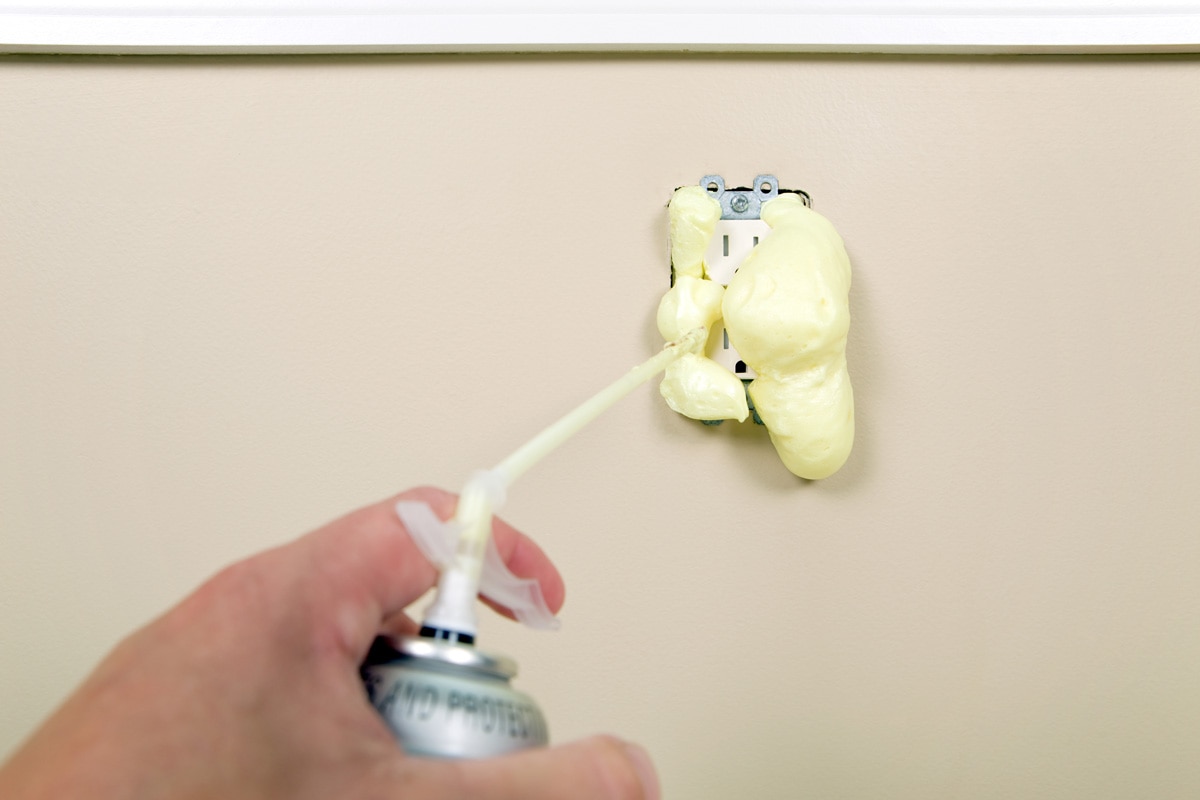
The good news is that expanding foam is designed to last for decades, ranging from 80 to 100 years!
That means you can rest assured knowing that your insulation will protect your home for many years. So, if you're looking for a long-term solution, expanding foam is worth considering.
Should You Use Expanding Foam for Your Home Ventilation and Insulation?
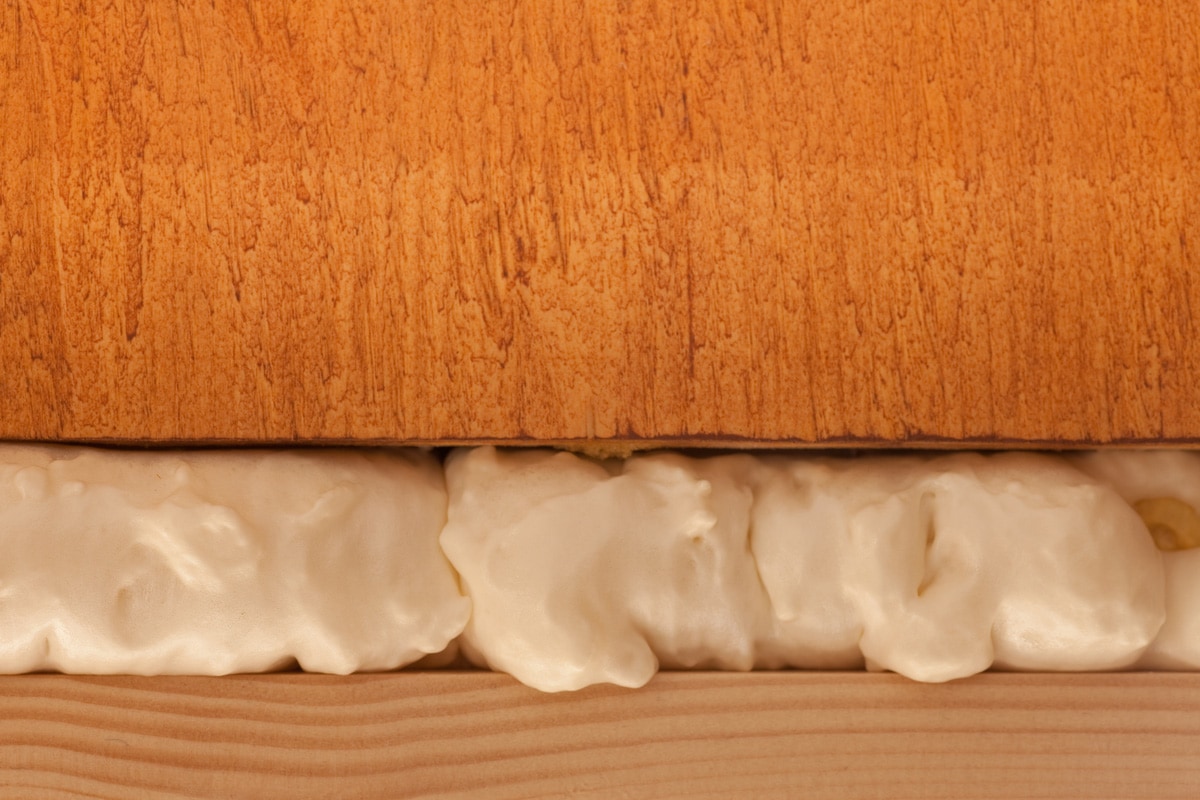
Expanding foam is a type of construction material that is used for insulation and sealing purposes. The foam expands to fill gaps or spaces when applied, creating an airtight seal. This makes it an ideal product for home insulation and ventilation projects. Expanding foam has several benefits, including:
- It can help to reduce energy costs by preventing heat loss through gaps in walls or ceilings.
- It can improve the acoustics of a room by absorbing sound waves.
- It can act as a barrier against moisture, pests, and dust.
- It is easy to apply and can be cut to any desired shape or size.
- It is a versatile product that can be used for various insulation and sealing projects.
Overall, expanding foam is an ideal product for anyone looking to improve the energy efficiency of their home or office space. It is also a convenient and easy-to-use product that can be used for a wide range of insulation and sealing projects.
Final Words
It is clear that expanding foam's "stickability" varies depending on the surface. Metal, plastic, and PVC surfaces work best with the adhesive quality of expanding foam.
Glass and wood surfaces may not be as receptive to the foam material. When using expanding foam for your next project or repairs, test it on a small area before applying it to the entire surface.
To get more ideas on proper insulation for your house, see our posts below:
Foam Vs. Rubber Vs. Vinyl Weatherstripping: Which Is Right For Your Home?


